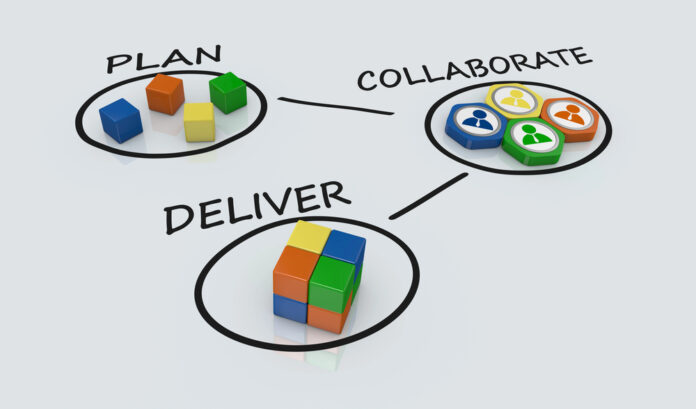
As new digital technologies transform consumer expectations, great products or detailed knowledge of your markets is not enough to maintain a loyal customer base. The market structure is undergoing rapid and constant change, and businesses that want to remain competitive in this dynamic ecosystem require a thriving culture of innovation.
The ability to foster and channel employee-driven innovation allows top-tier companies to optimize their existing operations, and penetrate new markets, while their competitors stagnate or risk becoming obsolete. Empowered employees, who are motivated to share ideas, bring diverse perspectives and almost unlimited creativity to the table.
When employees get involved through structured innovation platforms, VPs, planners and managers gain multi-level input which can transform their perspectives and preconceptions. This stream of new perspectives and original ideas can be a game-changer. In this article, I’ll focus on three leading companies, across different sectors, to explore how their unique cultures of innovation through active employee engagement, enable growth, leadership, and profitability.
ICL Group’s Employee-Driven Innovation Culture
ICL Group is a leading global specialty minerals company and one of the largest fertilizer manufacturers in the world. The company employs over 12,500 people in dozens of operations worldwide and is redefining employee-driven innovation and empowerment. ICL’s pioneering internal innovation accelerator BIG (Business Innovation for Growth) attracted the attention of the prestigious Harvard Business School which featured BIG as a case study for its students.
BIG was developed when ICL realized it needed a coordinated and directed platform to tap into its employees’ full creative potential. They established BIG to encourage and facilitate cross-team collaboration and to reward employee contributions to the company’s strategic direction and vision. Crucially, BIG was designed to operate independently of existing chains of command within ICL. Every employee submission to BIG receives an independent appraisal by a team of expert innovators – who evaluate ideas according to published criteria.
To help gauge the measure of success of BIG, in the first 3 years following its launch, ICL employees submitted 4,738 ideas, leading to 1,154 completed projects, and ICL realized an Annual Operating Income Contribution of $262 million during the relevant period.
BIG is built around three key pillars: enhancing ideation, accelerating execution, and improving collaboration. One reason for its popularity is that all projects are implemented with standardized metrics, milestones, and review points. Contributors know there is a transparent and systematic allocation of resources and ideas submitted to BIG succeed or fail on merit itself.
BIG’s transparency and accountability with its independence from normal management structures, along with the speed and fairness with which it evaluates ideas is supercharging ICL’s culture of innovation. The program fosters a sense of ownership and recognition among its workforce. Employees appreciate and understand that they can contribute to the strategic momentum of a major company to influence their day-to-day roles.
Google’s 20% Time Policy and Innovation Culture
Google needs little introduction, the multinational technology company has been a definitive innovator since it began as a student research project in 1996. Two of Google’s most iconic and widely used tools – Gmail and Google Maps – are the fruits of the company’s 20% time policy. Google’s bold innovation allows employees (in theory) to devote 20% of their working hours to personal projects that potentially benefit the company.
Giving employees the freedom to work on passion projects is a growth strategy that many companies simply can’t afford, but Google has the resources to embrace the concept. Free experimentation and the freedom to fail without negative consequences – are prerequisites for a genuine culture of innovation. The Google 20% time policy allowed Susan Wojcicki to build the team that created Adsense (a huge cash cow for Google) and led to the development of Google News.
Another influential innovation is the Google for Startups accelerator which provides mentorship and resources to external innovators whose concepts are aligned with Google’s strategic vision. As part of this project, Google opened campuses in six major cities around the world. Envisaged as hubs for collaboration, mentorship, and the development of disruptive technologies, Google for Startups also provides the most promising growth-stage startups with practical assistance, advice across technical and product spheres, and leadership training.
Google’s unique culture of innovation strikes an effective balance between freedom for employees to devote time to experimentation and exploration of disruptive technologies, in this manner investing in external partnerships with a new generation of tech entrepreneurs and founders.
Salesforce’s Customer-Centric and Collaborative Innovation Culture
Salesforce is a cloud-based software company and a DJIA component that bases its corporate culture on an interpretation of Ohana culture. Ohana is a Hawaiian word meaning family. Ohana embraces the idea of interconnectivity, that people from differing backgrounds can come together as though they were blood relatives, accepting responsibility for each other’s development and welfare.
When Ohana culture is applied in a corporate context, there is a strong focus on inclusion, teamwork, and collaboration. Over time, this builds strong bonds and high levels of trust across the corporate environment, creating a foundation for innovation.
Another guiding principle behind Salesforce is its concept of customer-centric innovation. Salesforce harnesses its technological expertise, and culture of collaboration, teamwork, and inclusion to bring together marketing, sales, customer service, and other disparate teams to enable a 360-degree profile of each customer to create a tailored experience. Rather than individual teams or departments claiming ownership of the customer experience, the company focused on building collaboration between teams thereby placing customers at the center of each interaction for more personalized service.
Salesforce is expert at integrating customer feedback into product development, it has become a holistic company-wide endeavor. Customer-centric innovation draws on Salesforce’s internal culture of collaboration with its ability to connect to its customers and accept external input. Most companies aim for customer-centric innovation, but few employ the process as systematically or as successfully as Salesforce.
Conclusion: Employee Empowerment Fuels Innovation and Success
If we can take away one key point from these three different cultures of innovation, is that sustained innovation relies upon employee engagement. Companies like ICL, Google, and Salesforce empower their employees on multiple levels to help stimulate innovation. Employee-driven innovation develops its own powerful momentum, helping ensure corporate success in a rapidly evolving technological ecosystem.
Open communication and collaboration are prerequisites for an innovative workplace culture, they require using functional platforms like ICL’s BIG program or established practices like Google’s 20% time policy to reach their potential. Companies also need to build trust through inclusion to create a work environment that values bold experimentation and evaluates failures for valued insights, rather than as a mistake to be stigmatized. Whether individual or institutional, fear of failure is perhaps the biggest obstacle to innovation, ICL Group, Google, and Salesforce have successfully overcome that fear.



































